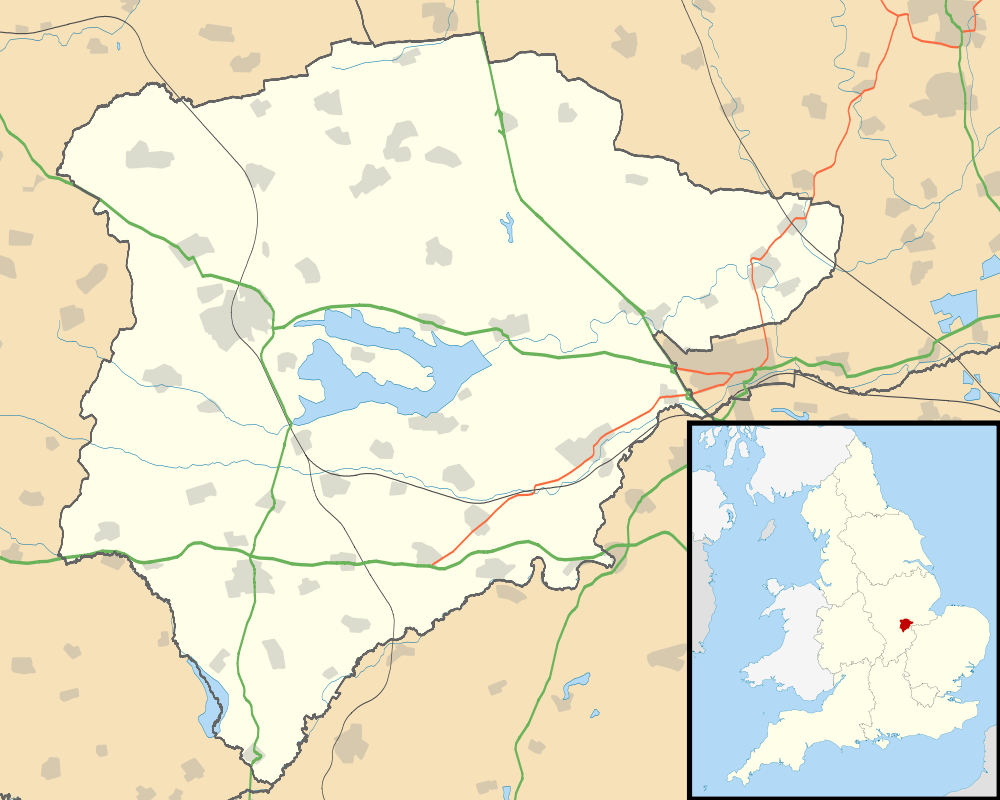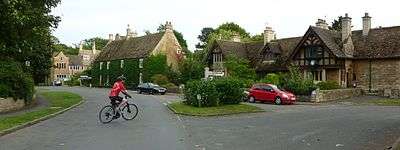Hambleton, Rutland
| Hambleton | |
 Hambleton |
|
| Area | 4.47 sq mi (11.6 km2) [1] |
|---|---|
| Population | 140 2001 Census[2] |
| – density | 26/sq mi (10/km2) |
| OS grid reference | SK900075 |
| – London | 84 miles (135 km) SSE |
| Unitary authority | Rutland |
| Shire county | Rutland |
| Ceremonial county | Rutland |
| Region | East Midlands |
| Country | England |
| Sovereign state | United Kingdom |
| Post town | OAKHAM |
| Postcode district | LE15 |
| Dialling code | 01572 |
| Police | Leicestershire |
| Fire | Leicestershire |
| Ambulance | East Midlands |
| EU Parliament | East Midlands |
| UK Parliament | Rutland and Melton |
Coordinates: 52°39′32″N 0°40′16″W / 52.659°N 0.671°W
Hambleton is a village and civil parish in Rutland, England. It is located about two miles (3 km) east of Oakham. In 2001 it had a population of 140, increasing to 203 at the 2011 census.[3] Since the construction of Rutland Water in the 1970s, the village has been closed off on three sides by water and the area is known as the Hambleton Peninsula.
The parish originally included the settlements of Upper Hambleton, Middle Hambleton and Nether Hambleton. The latter two have now been almost completely submerged by the construction of Rutland Water (originally known as Empingham Reservoir). The Jacobean Old Hall in Middle Hambleton (built in 1611) is now situated on the water's edge.
The village contains the 12th century Church of England church of St Andrew, a pub called The Finch's Arms and a hotel and restaurant, Hambleton Hall. The church, much enlarged over its history still has an original Norman south doorway and was extensively restored and fitted out during the 19th century. This included excellent stained glass windows created mainly by J Egan during the last decade of the 19th century. Two of these were dedicated by the Reverend David Elliot Young to his mother and infant child who are buried in the attached graveyard. It is believed that the windows were funded by Walter Marshall after being petitioned by Rev Young. Adjacent to the south side of the church yard stands a sixteenth-century priest house.[4] The Hall was built in 1881 as a hunting box by Walter Marshall who left it to his sister, Eva Astley Paston Cooper. She was a socialite who gathered a salon including Noël Coward, Malcolm Sargent and Charles Scott-Moncrieff. Coward wrote Hay Fever while staying in the village.
There is a view across to Burley House from the north side of the village and from the south one can see across to the sailing club at Edith Weston on the far shore. The track around the peninsula along the lakeside takes walkers and cyclists through bluebell woods.
Gallery
- The parish church dedicated to St Andrew
- The Priest House
- One of St Andrew's Windows
 The high street
The high street
References
- ↑ "A vision of Britain through time". University of Portsmouth. Retrieved 9 March 2009.
- ↑ "Rutland Civil Parish Populations" (PDF). Rutland County Council. 2001. Retrieved 9 March 2009.
- ↑ "Civil Parish population 2011". Neighbourhood Statistics. Office for National Statistics. Retrieved 25 June 2016.
- ↑ "Hambleton". British History Online. Retrieved 28 October 2010.
External links
| Wikimedia Commons has media related to Hambleton, Rutland. |